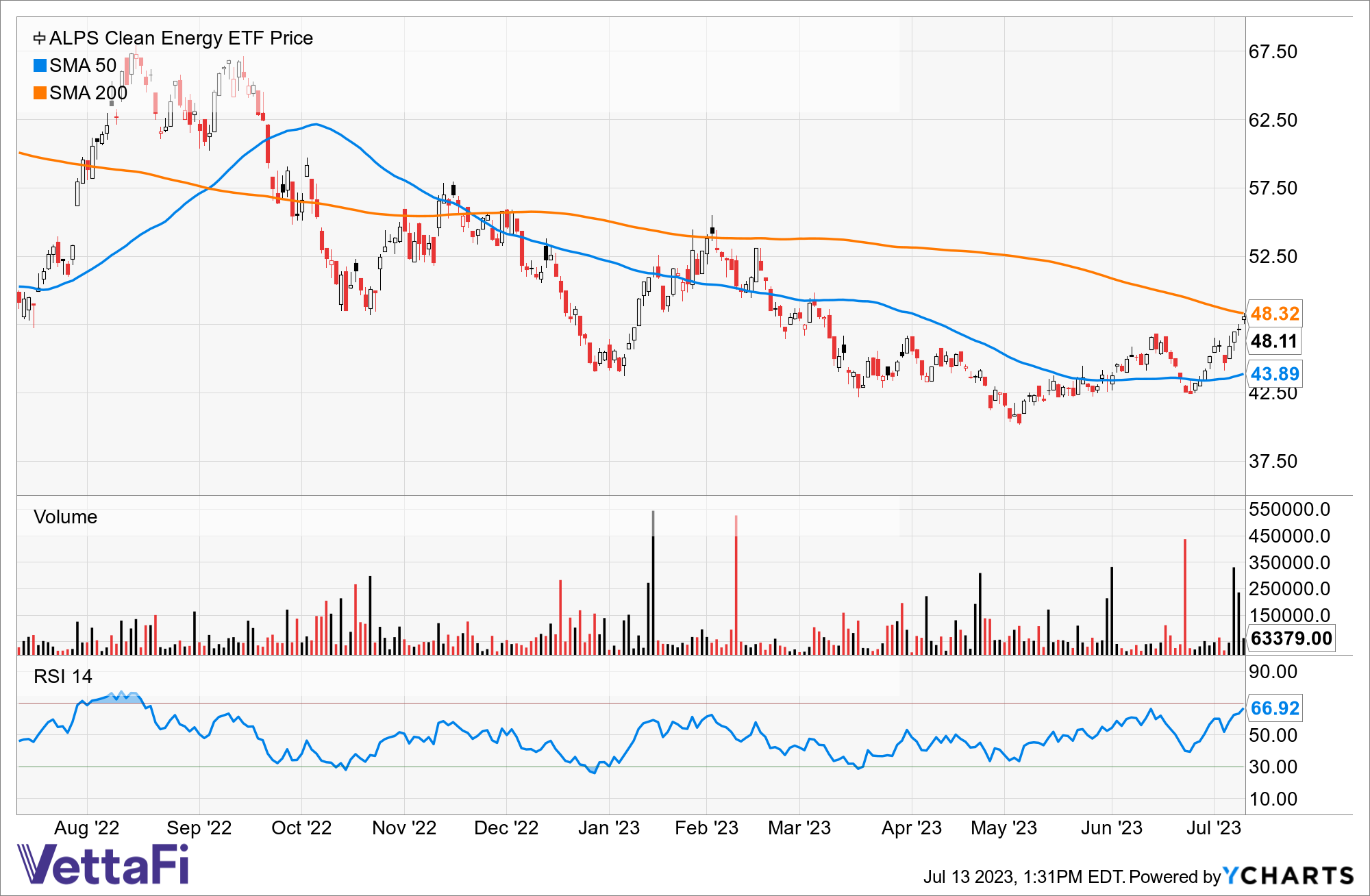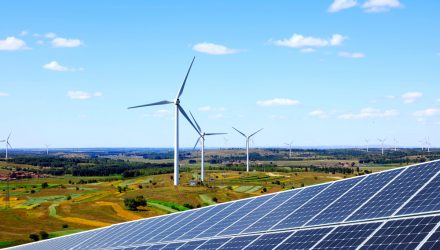Burgeoning investment in clean energy sources may be driving returns for one clean energy ETF. The ALPS Clean Energy ETF (ACES) hit a key buy signal Thursday, with its price rising above its 200-day Simple Moving Average (SMA). While the strategy’s tech indicators remain some distance from a “golden crossover,” ACES’ change in momentum may intrigue some investors.
Technical indicators may not guarantee returns or future performance — but they do help measure momentum. ACES’ 200 and 50-day SMAs had been dropping for some time before recently spiking per YCharts. The factor that stands out most in ACSE’ tech chart may relate to the concept of support and resistance levels.

The ACES ETF has been showing some interesting tech action per YCharts.
The clean energy ETF’s price has now broken up the peaks it hit in April and June as seen above. Investors hesitance to lift ACES above about $47.00 seems to have eased, suggesting a change in fortunes for the strategy itself. ACES has seen its returns spike in the last month, too, which may offer another clue into its prospects.
The strategy has returned 8.3% over the last month compared to 6.2% YTD. That one month return also outperformed both its ETF Database Category and Factset Segment Averages. Of course, clean energy investing likely is riding significant investment in clean energy sources.
See more: “Play These Rising Clean Energy Stocks in ACES”
ETFs Benefitting from Clean Energy Investing
The Biden Administration’s Inflation Reduction Act which passed last August invested tens of billions in clean energy. Much of that investment came via tax credits for firms looking to invest in clean energy themselves. ACES holds names like First Solar (FSLR) and hydrogen cell firm Plug Power (PLUG) in its top ten holdings by weight, for example. Those firms invest in solar and battery technology, respectively.
With clean energy investing set to continue for some time as government support continues to arrive, ACES can provide one route in. It charges less than other energy ETFs like the Global X Lithium & Battery Tech ETF (LIT), for example, which asks for 75 bps. For investors and advisors looking to add some clean energy ETF exposure to their portfolios, ACES’ buy signal may invite another look.
For more news, information, and analysis, visit the ETF Building Blocks Channel.








